State of the Overseas Voter

Nearly 3 million U.S. citizens living abroad can vote absentee — in many cases, even if they have in the United States. They're covered by the Uniformed and Overseas Citizens Absentee Voting Act (UOCAVA) of 1986, which requires that states allow military members, their eligible family and overseas citizens to vote absentee in federal elections.
Voting is more complicated for citizens living abroad than for local voters. They have to update their registration and explicitly request an absentee ballot — potentially every year. They have to follow their state's rules on how election paperwork can be sent and received, which may require technology not readily available or long mailing times. Most need to vote earlier than local voters so that their ballots are received by voting deadlines.
To learn more about overseas voters and help them navigate the absentee voting process, FVAP conducts the Overseas Citizen Population Analysis (OCPA) every two years following the general election. It combines data from U.S. and foreign governments, state records of ballot requests and voting, and a survey of 4,215 overseas citizens who requested an absentee ballot for the 2022 General Election — the only representative survey of this group.
Here are some highlights of overseas citizen voting in 2022.
OUT OF THE 2.8 MILLION OVERSEAS CITIZENS ELIGIBLE TO VOTE, 3.4% VOTED IN 2022
Since there is no list of all U.S. citizens living abroad, FVAP compiles foreign and domestic data to estimate the number of voting-age U.S. citizens living in nearly 200 countries around the world. Not every individual in the overseas citizen population is 18 years of age or older and thus old enough to vote. Of the estimated 4.4 million overseas citizens in 2022, about 2.8 million were of voting age.
OF THE ESTIMATED 2.8 MILLION ELIGIBLE OVERSEAS VOTERS, MOST RESIDE IN CANADA AND THE UNITED KINGDOM
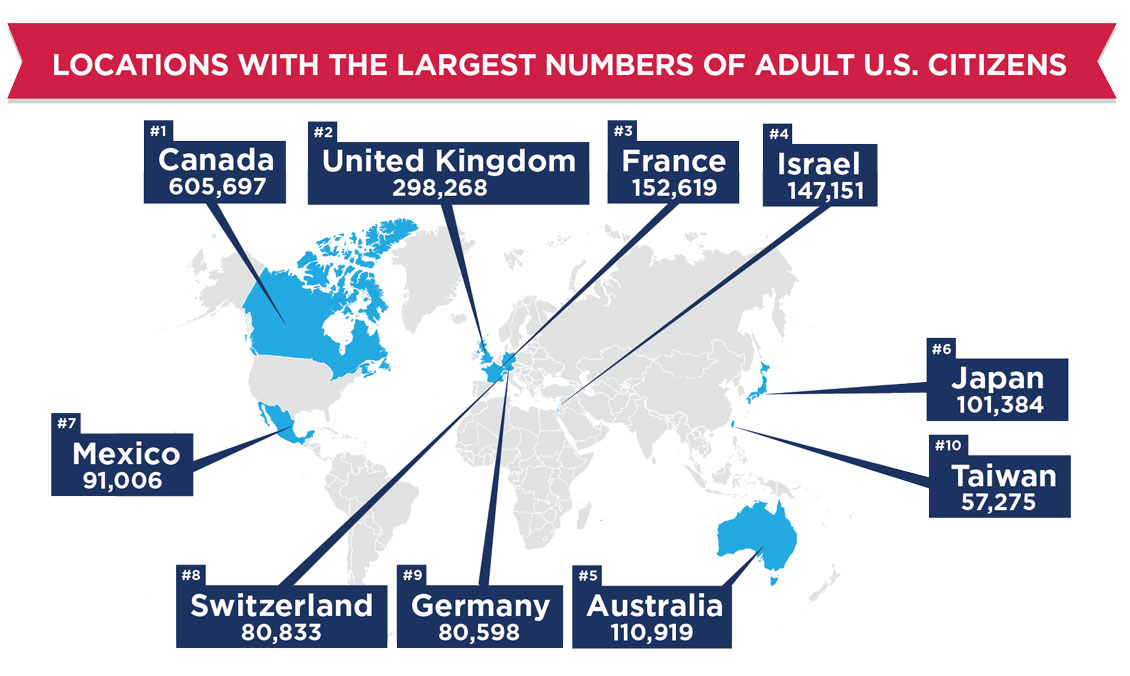


Two of the locations with the largest populations of voting-age U.S. citizens are in the top-three in overseas citizen population (Canada and the United Kingdom).
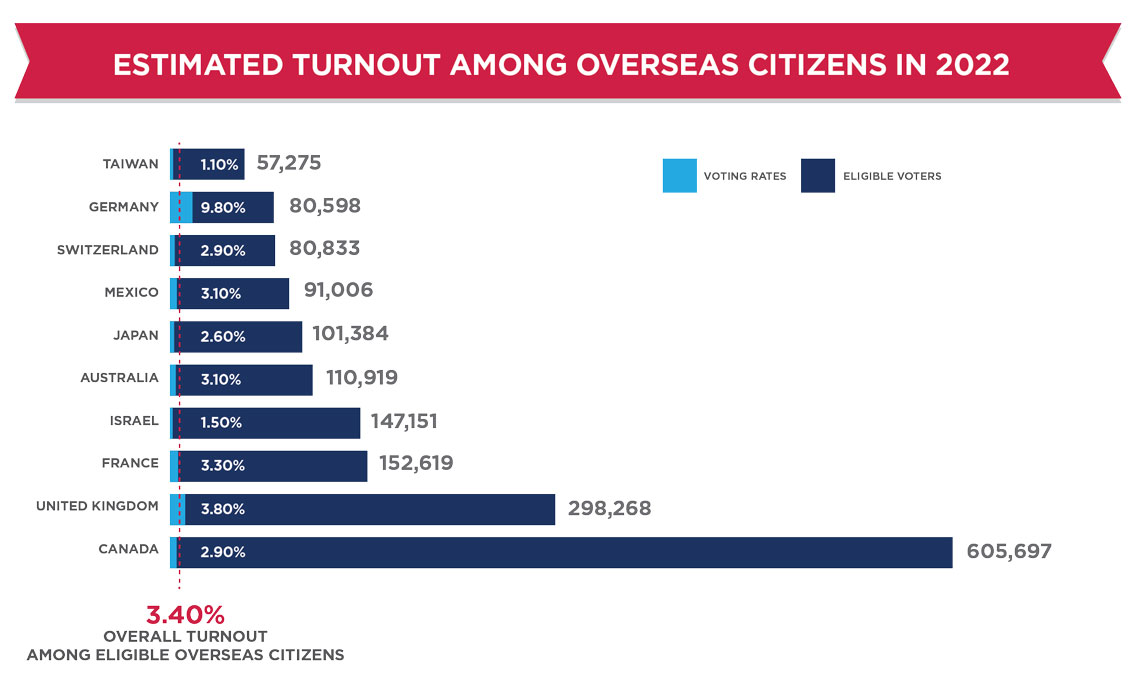


CITIZENS LIVING ABROAD ARE MUCH LESS LIKELY TO VOTE THAN THOSE STATESIDE
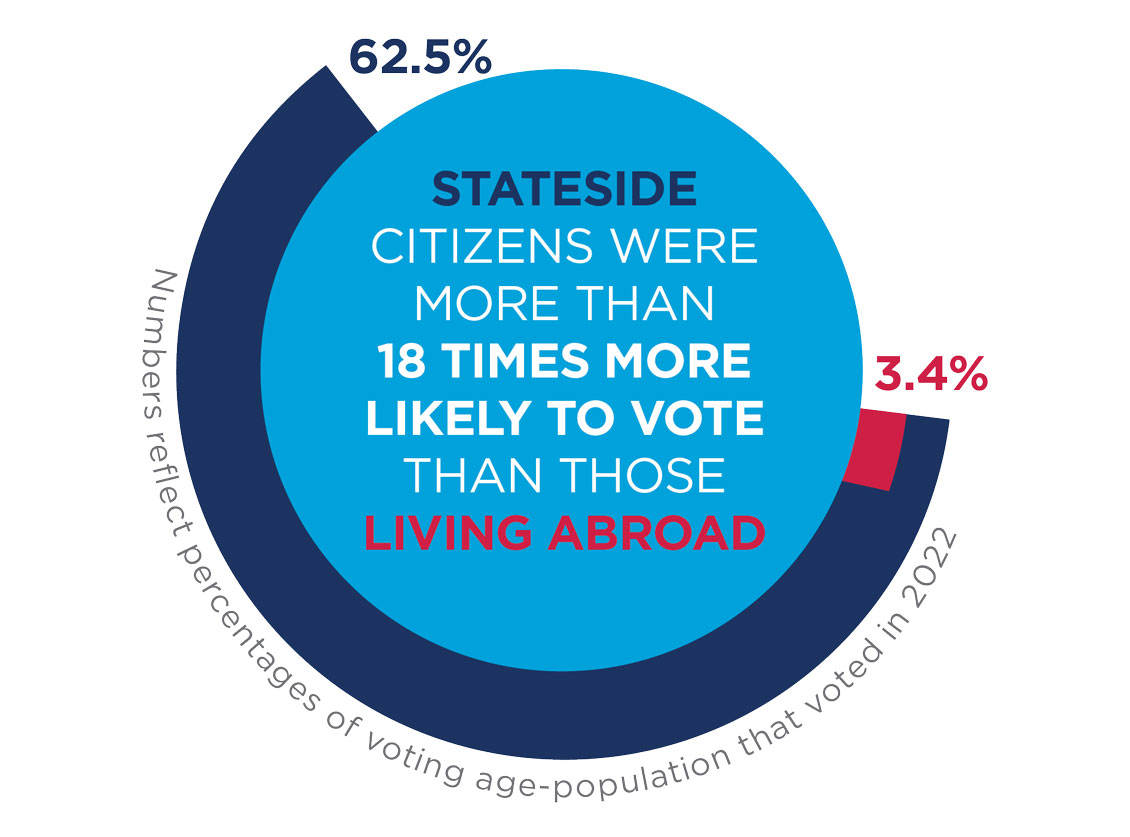
The voting rate among voting-age individuals in the United States was approximately 62.5 percent in the 2022 General Election, compared to the estimated 3.4 percent voting rate for overseas citizens. FVAP calls the difference the voting gap. While some overseas citizens don't want to vote, in 2022 about 10 percent of the gap between domestic and overseas voting rates could be attributed to real or perceived obstacles overseas citizens encountered that domestic voters do not face.
The portion of the voting gap attributable to real or perceived obstacles varies substantially among different regions of the world, with high-obstacle countries concentrated in Eastern Europe, Asia, Latin America, and Africa. FVAP's includes a map categorizing each country by the size of its obstacle gap.
ABOUT ONE-FIFTH REPORT THAT THE POSTAL SYSTEM IN THEIR COUNTRY WAS SOMEWHAT OR VERY UNRELIABLE
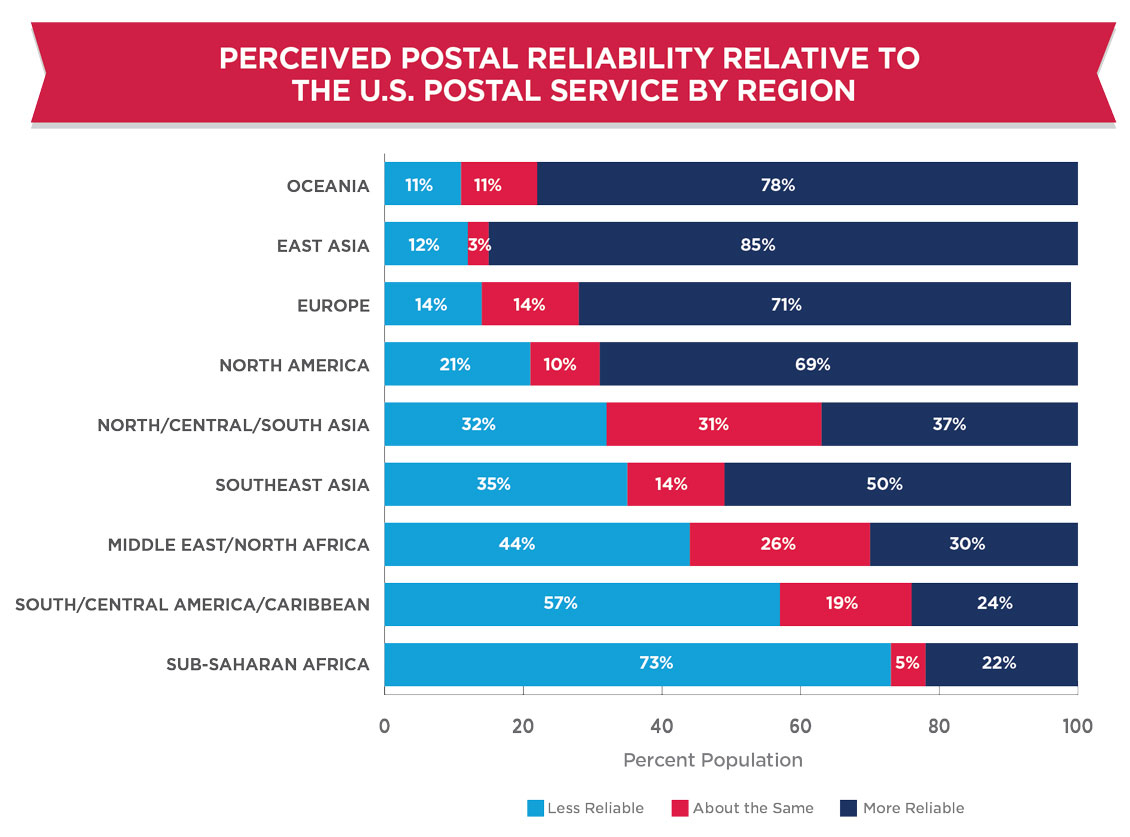


Results from the 2022 OCPS demonstrate a common challenge that overseas citizens encounter when voting: mailing systems outside of the United States are often perceived as unreliable.
ELECTRONIC BALLOT RETURN INCREASES THE PROBABILITY OF HAVING A VOTE RECORDED
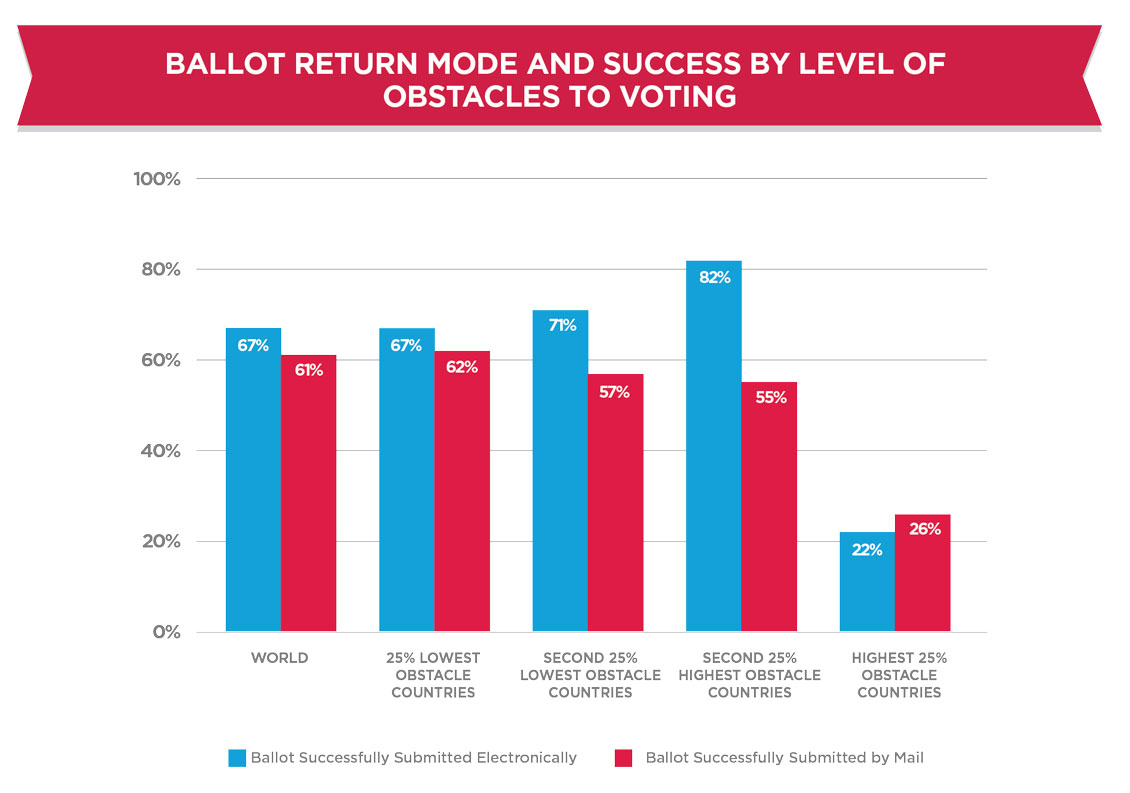


Absentee voters who returned their ballots electronically were disproportionately concentrated in high-obstacle countries, consistent with the theory that electronic modes of ballot return mitigate the effect of mailing-related obstacles to voting. However, more than 55 percent of voters who had the option to return their ballot electronically actually did so, with many still opting to return their ballot by mail. This speaks to a potential lack of awareness among absentee ballot returners concerning options for electronic modes of return—or larger concerns about electronic return.
THE OVERSEAS BALLOT REQUEST RATE WAS HIGHEST IN NORTH/CENTRAL/SOUTH ASIA
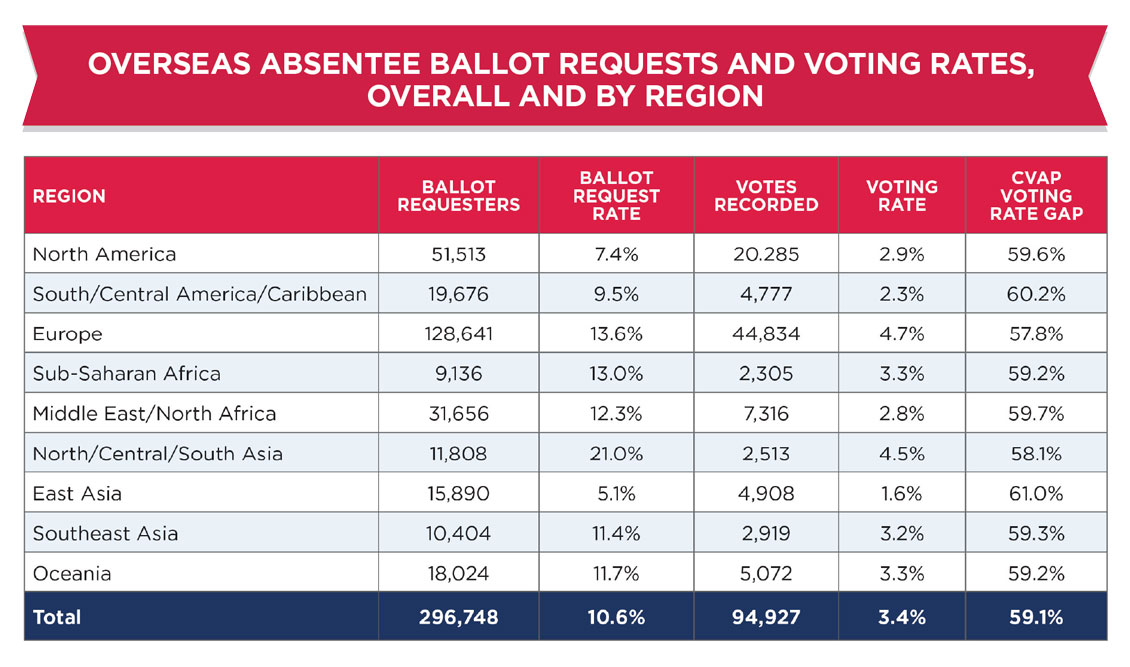


An estimated 21.0 percent of the overseas citizen voting population requested an absentee ballot from North/Central/South Asia, while Europe had the highest regional absentee voting rate at about 4.7 percent. In 2022, the lowest voting rates were among overseas U.S. citizens in East Asia. In these countries, an estimated 1.6 percent voted in the 2022 General Election.
The report on overseas citizens and their voting behaviors in 2022 includes:
Data on U.S. Citizens Living and Voting from Abroad
FVAP conducts the Overseas Citizen Population Analysis (OCPA) after each federal election cycle to meet its federal requirement for a statistical analysis of overseas citizen participation rates. The study estimates the number of U.S. citizens living abroad, assesses overseas voting participation, monitors how voters are navigating the absentee voting process from abroad, and informs efforts to remove obstacles.
This State of the Overseas Voter highlights recent statistics on the numbers of voting-age citizens living overseas and their voting experiences. More information on U.S. voters living abroad can be found in FVAP's Interactive Data Center, Post-Election Report to Congress, and the OCPA technical reports.
Each time the OCPA is conducted, the estimating methodology is updated with newly available data. As a result, the population estimates become more accurate over time. The 2022 report incorporated new data sources for foreign government estimates and Gross Domestic Product (GDP), as well as updated records of U.S. citizens living overseas who filed taxes using a foreign address. The latest report uses the population estimates of the numbers of U.S. citizens living in foreign countries from 2022 and combines them with data from the 2022 Overseas Citizen Population Survey to estimate voting rates of the overseas citizen voting-age population in the 2022 General Election. It also compares the rate to that of the citizen voting-age population living in the United States; determines how much of the difference in participation is due to obstacles unique to the overseas voting process; and assesses how these obstacles can be mitigated.
See all previous volumes of the Overseas Citizen Population Analysis:
Separately, FVAP releases research on the voting experiences of citizens serving on active military duty as part of the State of the Military Voter.




